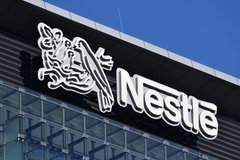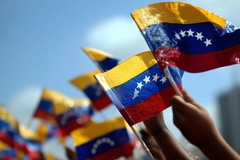
- Industry news
Industry news
- Category news
Category news
- Reports
- Key trends
- Multimedia
- Journal
- Events
- Suppliers
- Home
- Industry news
Industry news
- Category news
Category news
- Reports
- Key trends
- Multimedia
- Events
- Suppliers
SABMiller Plc Trading Update

Financial performance for the six months was in line with the group’s expectations, benefiting from generally favourable exchange rates when compared with the prior year, whilst on an underlying basis slower volumes have constrained profit growth.
15/10/08 SABMiller plc provided an update regarding trading during the six-month period ended 30 September 2008, which is the first half of its financial year. Volume growth is shown using the group’s new definition which aligns the basis of reported volume growth with that of group revenue and EBITA. Further details regarding the new definition can be found at the end of the statement. The calculation of the organic growth rates included below excludes volumes for acquired businesses for the first 12 months after an acquisition.

The group recorded 3% growth in lager volumes with organic lager volumes marginally ahead of the prior year (up 1% in the second quarter). This reflects a high comparable (organic lager growth of 9%) and moderating consumer demand in many markets. Group revenue growth has been assisted by firm pricing, with revenue per hl at constant exchange rates growing in excess of 5%, and this has continued to offset the impact of higher input costs.
Financial performance for the six months was in line with the group’s expectations, benefiting from generally favourable exchange rates when compared with the prior year, whilst on an underlying basis slower volumes have constrained profit growth. Deteriorating global economic conditions, weakening consumer demand and volatile exchange rates make the prospects for the rest of the financial year increasingly uncertain.
In Latin America, lager volumes grew by 3%. Lager volumes in Colombia were 3% below the prior year, showing some improvement in the trend recently, although high consumer lending rates have continued to inhibit consumer demand. In Peru, lager volumes were 10% ahead of the prior year, reflecting a robust trading environment and strong local execution. Our business in Ecuador continued to deliver strong performance with 14% lager volume growth, as the market continued to respond to the reinvigoration of the brand portfolio and route to market.
In Europe lager volume growth on an organic basis was 2%, following strong growth in the prior year (12%). Poland achieved organic domestic volume growth of 4% and continued to increase market share. Romania volumes also outperformed the market, growing 24%, driven by the Timisoreana and Ursus brands. Organic volumes in Russia were 4% down, impacted by the effect of sustained high inflation on consumer demand and de-stocking of wholesale inventories towards the end of the period. Czech Republic domestic volumes declined by 5%, but the trend has improved in recent months in response to trade and marketing initiatives.
As previously reported, in the first quarter of our financial year Miller Brewing Company’s US domestic volume sales to retailers (“STRs”) decreased by 2.0% compared to the prior year. The Miller Brewing Company and the Coors Brewing Company combined their US and Puerto Rico operations with effect from 1 July 2008 to form MillerCoors. In the three months to 30 September, MillerCoors’ domestic US volume STRs grew by 0.7% on a trading day adjusted basis when compared to pro forma combined STRs in the comparable period of the prior year. Coors Light brand volumes increased 6.8%, whilst Miller Lite decreased 3.6%. The craft and import portfolio volumes rose 5.0%, Keystone Light posted double digit gains and both Coors Banquet and Miller High Life continued to generate good growth. Miller Chill volumes declined significantly with aggressive competition in the segment.
In our Africa and Asia business, organic lager volumes increased 2%. China organic volumes were flat, although growth of 4% was achieved in the second quarter despite the continued impact of significant beer industry price increases. In Africa, lager volumes grew by 11% on an organic basis, following good growth in the prior year (8%), with strong growth across the region, particularly in Tanzania.
In South Africa, our lager volumes were 1% below the prior year with sales stronger in the second quarter. Soft drink volumes grew 2%. The market overall continued to be affected by softer consumer demand. As previously reported, ongoing cost inflation and currency weakness have impacted financial performance.










